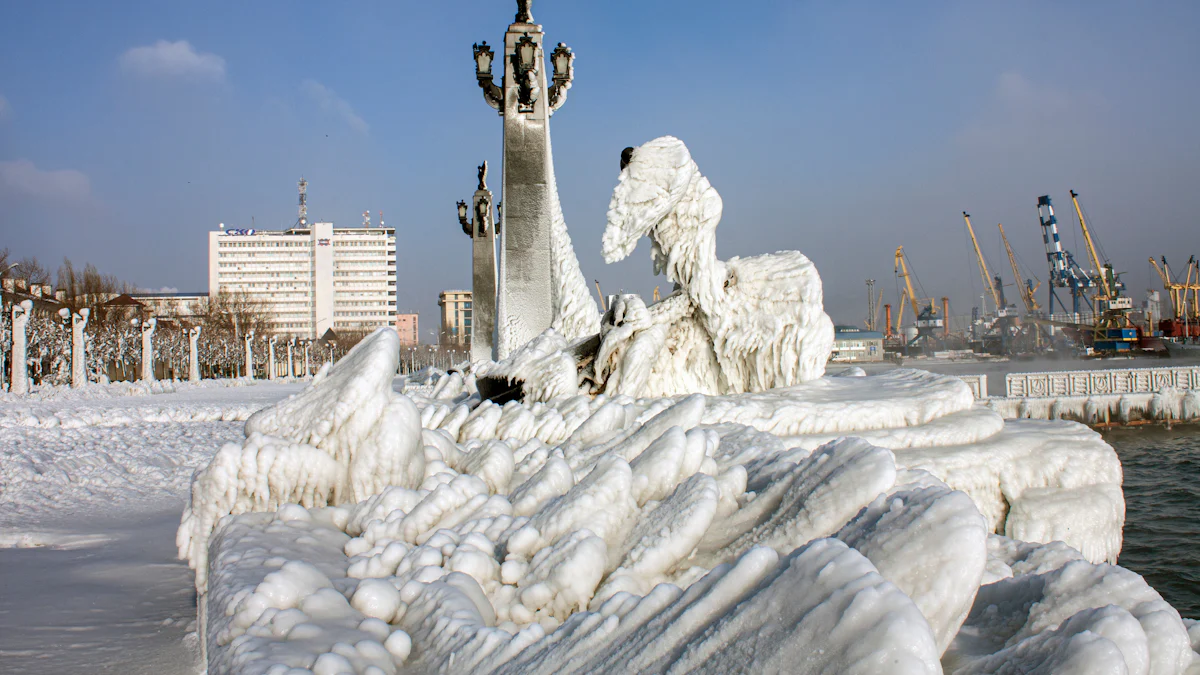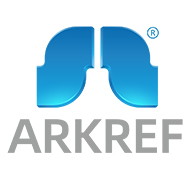Exploring the Applications of Industrial Freezing in 2025

Industrial freezing plays a vital role in preserving the quality of products and extending their shelf life. This technology halts the natural deterioration process by freezing items at their peak freshness. For example, in the food industry, it prevents premature spoilage and reduces global food waste. Farmers can freeze surplus harvests, while consumers benefit from longer-lasting produce and reduced waste at home.
The importance of industrial freezing extends beyond food. It supports industries like pharmaceuticals and electronics by ensuring the preservation of sensitive materials. With the frozen storage market projected to grow from $149.15 billion in 2024 to $163.43 billion in 2025, this technology continues to drive innovation and efficiency across sectors.
Key Takeaways
Industrial freezing keeps food fresh longer by stopping it from spoiling. This helps people and cuts down on food waste.
Cryogenic freezing cools things very fast. It keeps the texture and taste, which is great for delicate items like seafood and medicine.
New freezing methods, like Individual Quick Freezing (IQF), freeze items one by one. This makes them easier to use and wastes less.
Saving energy is important in industrial freezing. Better systems can save money and help the environment.
The future of industrial freezing uses smart tools and eco-friendly ideas. This will help many industries grow.
Understanding Industrial Freezing
What is Industrial Freezing?
Industrial freezing is a process that preserves materials by lowering their temperature to inhibit biological and chemical changes. It involves cooling items to a point where water inside them transitions from liquid to solid. This process relies on thermodynamic and kinetic principles. Initially, the material cools to the nucleation temperature, where the first ice crystal forms. The freezing point depends on factors like water content and soluble solids. Bound water, for instance, remains unfrozen even at extremely low temperatures. The process occurs in three stages: prefreezing, freezing, and storage. Each stage involves specific temperature changes and phase transitions that ensure the material's quality remains intact.
Importance of Industrial Freezing in Modern Industries
You encounter industrial freezing in many industries because it offers unmatched preservation capabilities. Compared to methods like canning or dehydration, freezing retains sensory attributes and nutritional properties better. It extends the shelf life of products by lowering temperatures to -18 °C or below, which halts microbial growth and chemical reactions. This makes it a preferred choice for preserving food, pharmaceuticals, and even biological samples. Cryopreservation, a specialized form of freezing, plays a critical role in storing vaccines and biopharmaceuticals. Its flexibility and efficiency make it indispensable in modern industrial processes.
Key Benefits of Industrial Freezing
Industrial freezing provides several advantages. It preserves the quality of products while extending their shelf life. For example, frozen fruits and vegetables maintain their texture, flavor, and nutrients better than canned or dried alternatives. Cryopreservation ensures the long-term viability of sensitive materials like cells and tissues. The process is also cost-effective in terms of processing time, even though it requires significant energy for freezing and storage. Additionally, freezing is technically convenient and minimizes degradation when applied correctly. These benefits make it a cornerstone of industries that prioritize quality and longevity.
Types of Industrial Freezing Technologies

Cryogenic Freezing
Cryogenic freezing uses extremely low temperatures to freeze products quickly. This method relies on liquid nitrogen or carbon dioxide, which are applied directly to the product. The rapid cooling process minimizes the formation of large ice crystals, preserving the texture and quality of the frozen items. You’ll often find cryogenic freezing in industries where maintaining product integrity is critical, such as frozen food production and pharmaceutical storage.
This technology is highly flexible and works well for delicate or irregularly shaped items. For example, it’s ideal for freezing seafood, fruits, and even ready-to-eat meals. Cryogenic systems also have a smaller footprint compared to mechanical systems, making them suitable for facilities with limited space. However, the operating costs can be higher due to the consumption of cryogenic gases.
Mechanical Freezing
Mechanical freezing systems are among the most common technologies in industrial applications. These systems use a closed refrigeration cycle to remove heat from products. Components like compressors, condensers, evaporators, and expansion valves work together to achieve efficient cooling. You’ll see this method widely used in the food industry, especially in tunnel freezers, air blast freezers, and spiral freezers.
Tunnel freezers are particularly effective for freezing large quantities of food quickly. They use circulating refrigerants to lower temperatures, ensuring consistent results. Mechanical freezing offers excellent scalability, allowing you to process specific quantities of food per hour based on your operational needs. While the initial investment may be higher, the long-term operating costs are often lower compared to cryogenic systems.
Plate Freezing
Plate freezing is a highly efficient method that uses direct contact to freeze products. In this process, items are placed between vertical or horizontal plates with refrigerant flowing through them. The direct contact ensures fast and uniform freezing, making it ideal for bulk products like seafood, meat, and vegetables.
This method offers several advantages. It freezes products quickly, preserving their quality by minimizing large ice crystal formation. Plate freezing also consumes less energy compared to other techniques, making it an environmentally friendly option. Its versatility allows you to use it for a wide range of products, from fruits to processed foods. If you’re looking for a reliable and energy-efficient solution, plate freezing is an excellent choice.
Individual Quick Freezing (IQF)
Individual quick freezing is a revolutionary method that freezes food items individually rather than in bulk. This process uses extremely low temperatures and rapid cooling to freeze each piece of food separately. For example, instead of freezing a block of berries, IQF freezes each berry individually. This ensures better quality and usability.
You’ll find individual quick freezing especially beneficial for preserving food products. It locks in essential nutrients, so fruits and vegetables retain their health benefits. The rapid freezing process also minimizes ice crystal formation, which helps maintain the texture and taste of food. As a result, IQF products like fruits, vegetables, and seafood remain firm and flavorful even after thawing.
This method offers several unique advantages. IQF significantly extends the shelf life of food, allowing you to enjoy high-quality ingredients year-round. It also reduces food waste. You can use only the amount you need without defrosting the entire package. Producers benefit too, as better inventory management leads to less spoilage. Additionally, IQF foods are convenient to handle and portion, making meal preparation easier.
Safety is another key benefit. The quick freezing process minimizes bacterial growth and prevents freezer burn, ensuring food remains safe to consume. IQF technology also supports sustainability by reducing waste and improving efficiency in food production. Whether you’re a consumer or a producer, individual quick freezing provides a reliable solution for preserving food quality and reducing waste.
Industrial Applications of Freezing

Food Processing Industry
Preserving Quality and Extending Shelf Life
Industrial freezing plays a crucial role in food preservation by maintaining the taste, texture, and nutritional value of products. Unlike other methods, freezing slows down the growth of microorganisms and reduces chemical reactions that degrade food quality. This ensures that fruits, vegetables, and other perishable items retain their sensory attributes over extended storage periods. For example, freezing in the seafood processing industry preserves the freshness of fish and shellfish, ensuring they remain safe and flavorful for consumers. Similarly, in the meat and poultry processing industry, freezing prevents spoilage and extends shelf life without compromising quality.
Fast freezing methods, such as cryogenic freezing, minimize the formation of large ice crystals, which can damage food structure. However, not all foods respond equally to freezing. Some may experience physical or chemical changes after thawing. To address this, innovative freezing technologies continue to improve freezing times and product quality, ensuring high-quality frozen food for consumers.
Role in Frozen Food Production
Freezing is essential in the production of ready-to-eat meals and other frozen food products. It locks in freshness and nutrients, making it possible to enjoy seasonal produce year-round. Individual quick freezing (IQF) technology, for instance, allows you to freeze food items individually, ensuring better usability and reducing waste. This method is particularly beneficial for food applications like frozen fruits, vegetables, and seafood. By maintaining the integrity of each item, IQF ensures that frozen food remains easy to portion and prepare.
The food processing industry relies on freezing to meet the growing demand for convenience and quality. Whether it’s frozen vegetables or ready-to-eat meals, freezing ensures that products reach consumers in optimal condition. This makes it a cornerstone of modern food applications.
Pharmaceutical Industry
Vaccine and Medicine Storage
Freezing is indispensable in the pharmaceutical industry, especially for vaccine and medicine storage. Controlled freezing technologies ensure that sensitive products remain stable and effective. For example, cryopreservation techniques maintain the integrity of vaccines by rapidly lowering their temperature to prevent degradation. Industrial cold storage facilities provide the necessary conditions to store these products safely, ensuring their availability when needed.
Applications in Biopharmaceuticals
In biopharmaceutical development, freezing ensures the viability of biological products. Controlled rate freezing technology rapidly cools materials from +40°C to -80°C, preserving their quality. Forced-air freezers provide uniform temperature control, reducing stress factors that could compromise product integrity. These advancements make freezing a critical tool for reproducibility and quality assurance in biopharmaceuticals.
Non-Food Industrial Applications
Chemical Manufacturing
Freezing supports chemical manufacturing by stabilizing reactive substances. It ensures safe handling and storage of temperature-sensitive chemicals. This application is vital for industries that require precise control over chemical reactions.
Electronics and Aerospace
In the electronics and aerospace sectors, freezing aids in the preservation of delicate components. It prevents damage during transportation and storage, ensuring that materials remain functional. This application highlights the versatility of freezing across industries.
Technological Advancements and Trends in 2025
Innovations in Freezing Equipment
Advanced freezing technology continues to evolve, offering faster, more efficient solutions for industrial applications. Modern equipment focuses on improving freezing speed while maintaining product quality. For example, new cryogenic systems now use enhanced liquid nitrogen delivery mechanisms, ensuring uniform cooling across all items. These innovations reduce ice crystal formation, preserving the texture and taste of frozen food.
In addition, manufacturers are designing compact freezing units to save space in industrial facilities. These units integrate modular designs, allowing you to scale operations easily. Enhanced plate freezers now feature automated loading systems, reducing manual labor and improving efficiency. With these advancements, industrial freezing becomes more accessible and reliable for diverse applications, from food preservation to pharmaceutical storage.
Energy Efficiency and Sustainability in Industrial Refrigeration
Energy efficiency plays a critical role in industrial refrigeration. By optimizing heat loads and using advanced equipment, you can significantly reduce energy consumption. For instance, inverter drives on compressors and evaporative condensers enhance cooling efficiency. Modern insulating materials, such as vacuum insulation panels, minimize heat transfer, further improving energy performance.
To maximize efficiency, consider these strategies:
Implement a centralized energy management system to monitor and optimize performance.
Use electronic expansion valves and variable frequency drives to reduce energy consumption by up to 38%.
Align production processes with local grid capacity to avoid peak electrical charges.
Sustainable practices also contribute to environmental conservation. Efficient envelope systems, like insulated metal panels, reduce energy losses. Variable refrigerant volume systems and energy-efficient LED lighting enhance overall efficiency. These measures not only lower costs but also support eco-friendly industrial refrigeration practices.
Integration of Smart Technologies
Smart technologies revolutionize industrial freezing by enhancing efficiency and ensuring cold chain compliance. Automated systems reduce door movements, preventing heat gain and maintaining freezing conditions. Robotics streamline operations in harsh environments, minimizing labor needs and reducing costs.
Smaller facility footprints and innovative energy solutions further optimize energy consumption. For example, automated inventory systems ensure precise temperature control, preserving product quality. These technologies also address labor shortages, making industrial freezing more sustainable and cost-effective. By integrating smart technologies, you can improve operational efficiency and meet the growing demand for reliable freezing applications.
Future Challenges and Opportunities
Industrial freezing continues to evolve, but you will face challenges as the technology advances. Addressing these issues will unlock new opportunities for innovation and growth.
Challenges in Industrial Freezing
Energy Consumption: Freezing systems require significant energy to operate. Rising energy costs and environmental concerns make this a pressing issue. You must explore ways to reduce energy usage without compromising performance.
Environmental Impact: Refrigerants used in freezing systems can harm the environment. Many traditional refrigerants contribute to global warming. Transitioning to eco-friendly alternatives is essential.
Equipment Costs: Advanced freezing technologies often come with high initial costs. This can be a barrier for small and medium-sized businesses. Finding cost-effective solutions will help make these technologies more accessible.
Product Quality: Maintaining consistent quality during freezing and thawing remains a challenge. Some products, especially delicate ones, may lose texture or flavor. You need to adopt innovative methods to preserve quality.
Opportunities for Growth
"Every challenge presents an opportunity for innovation."
Sustainable Practices: By adopting energy-efficient systems and eco-friendly refrigerants, you can reduce costs and environmental impact. This aligns with global sustainability goals.
Smart Technologies: Automation and IoT integration offer exciting possibilities. Smart systems can monitor and optimize freezing processes, ensuring efficiency and quality.
Expanding Applications: Freezing technology is finding new uses in industries like biotechnology and advanced manufacturing. Exploring these sectors can open up untapped markets.
Global Demand: The growing need for frozen food and pharmaceuticals creates opportunities for businesses to expand their operations. Meeting this demand requires innovative and scalable solutions.
By addressing these challenges, you can harness the full potential of industrial freezing. The future holds immense possibilities for those willing to innovate and adapt.
Industrial freezing remains a cornerstone of modern industries, offering unmatched preservation for food, pharmaceuticals, and other sensitive materials. Technological advancements continue to shape its future by improving food quality, safety, and energy efficiency. Innovations like isochoric freezing reduce ice formation, enhancing product quality while addressing environmental concerns. For you, this means longer-lasting, high-quality products and sustainable practices. As industries adopt these advancements, freezing will unlock new opportunities, ensuring its relevance in 2025 and beyond. The future of preservation lies in innovation, and you stand to benefit from its transformative potential.
FAQ
What is the difference between cryogenic and mechanical freezing?
Cryogenic freezing uses extremely low temperatures from liquid nitrogen or carbon dioxide for rapid cooling. Mechanical freezing relies on a closed refrigeration cycle with compressors and condensers. Cryogenic freezing works faster and preserves texture better, while mechanical freezing is more cost-effective for large-scale operations.
How does freezing prevent food spoilage?
Freezing halts microbial growth and slows chemical reactions by lowering the temperature to -18°C or below. This preserves the food's texture, flavor, and nutrients. Rapid freezing methods, like IQF, minimize ice crystal formation, ensuring high-quality frozen products.
Can freezing affect the nutritional value of food?
Freezing retains most nutrients in food. However, improper freezing or thawing may cause minor nutrient loss. Quick freezing methods, like IQF, help lock in vitamins and minerals, ensuring the food remains nutritious and flavorful.
What industries benefit the most from industrial freezing?
Industries like food processing, pharmaceuticals, and electronics rely heavily on freezing. It preserves food quality, ensures vaccine stability, and protects delicate electronic components during storage and transport. Freezing also supports chemical manufacturing by stabilizing reactive substances.
How can you make industrial freezing more energy-efficient?
You can improve energy efficiency by using advanced equipment like variable frequency drives, electronic expansion valves, and vacuum insulation panels. Centralized energy management systems and sustainable refrigerants also help reduce energy consumption and environmental impact.
Tip: Regular maintenance of freezing equipment ensures optimal performance and energy savings.
See Also
Revolutionizing Food Processing With Quick Freezing Tunnels
Exploring How Industrial Freezing Tunnels Operate Effectively
Spiral Freezers: Pioneering Innovations Within the Food Sector
Tunnel Freezer Technology: Solving Challenges in Food Freezing

